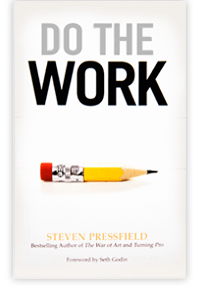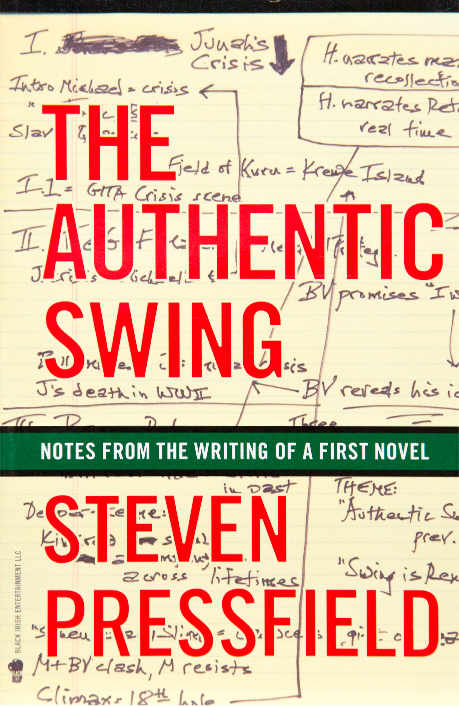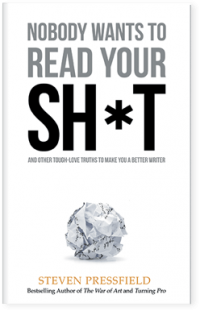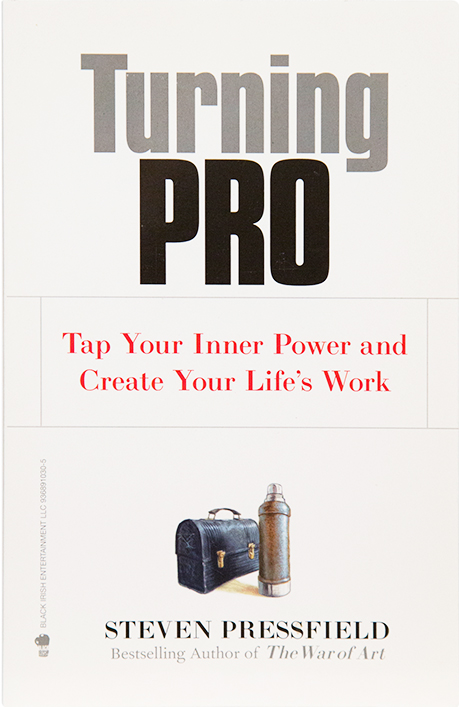The Villain Doesn’t Change

The craziest working arrangement I ever had in the screenwriting biz was when I worked for a producer I’ll call Joan Stark.
Joan insisted that I write in her office. I had to come in every day. Joan gave me a little cubbyhole beside the photocopy machine. I’d work on pages all morning and half the afternoon. Then we’d meet and Joan would go over the day’s work and give me corrections.

Susan Sarandon and Geena Davis as the heroes in “Thelma and Louise”
Every day she had problems with the same character—the villain.
She kept making me rewrite his scenes. One day I asked why. What mistake was I making?
You’re having the villain change. The villain can’t change.
I didn’t get it. “Why not?”
Because if the villain changed, he’d be the hero.
I remember thinking, That is the dumbest thing I’ve ever heard. Don’t we want the Bad Guy to be interesting? Shouldn’t he evolve like the Hero?
Answer: No.
The Alien doesn’t change. The shark in Jaws doesn’t change. The Terminator in The Terminator doesn’t change. And when he does in the sequels … OMG, he becomes the hero (or co-hero)—and we have new Terminators (who don’t change) who now become the villains.
I realized I had to start thinking more deeply about this.
Indeed external villains don’t change. Every antagonist in a James Bond movie. Every super-villain lining up against Batman, Superman, Spiderman, Iron Man, the Fantastic Four, the X-Men. Every force-of-nature villain (volcanoes, tsunamis, Mayan-predicted worldwide destruction, asteroids-crashing-into-Earth, Tripods invading New Jersey, global climate catastrophes). None of these is capable of change.
Zombies don’t change.
Vampires don’t change.
The Thing doesn’t change.
All these Bad Guys have one single-minded desire.
To eat your brain.
To suck your blood.
To destroy (or dominate) the world.
To give birth to baby Bad Guys.
Societal villains (as opposed to external villains) don’t change.
Racism in To Kill a Mockingbird, The Help, BlacKkKlansman.
Homophobia in Philadelphia, Dallas Buyers’ Club, Moonlight.
The societal villain in Thelma and Louise, written by Callie Khouri, (who won the Oscar for Best Original Screenplay) is male contempt for and domination of women.
The film depicts men as loutish husbands, leering truck drivers, sneak-thieving hitch-hikers, trigger-happy cops and FBI agents, and the arch-villain Harlan Puckett (Timothy Carhart) who commits the initial sexual assault on Thelma (Geena Davis) as a brutish, contemptuous, would-be rapist.
None of these Bad Guys changes.
What’s interesting about Callie Khouri’s character construction is that she does give us one decent man—Arkansas State Police investigator Hal Slocomb (Harvey Keitel). Hal is the only one among the cohort of law enforcement lummoxes pursuing Thelma and Louise who actually has sympathy for the women’s predicament and wants to help them. Hal even strikes up a bit of a telephonic friendship with Louise (Susan Sarandon) as he seeks to keep the police chase from getting out of control and devolving into a bloodbath.
Does this make Hal a villain-who-changes and thus an exception to my producer boss Joan Stark’s rule?
In the movie’s climax, when Thelma and Louise flee from the cops toward Grand Canyon thin air in their ’66 Thunderbird convertible, it’s Hal who rushes forward on foot into the path of all-out police gunfire to try to stop (and save) the ladies.
Does Hal’s act make him a villain who changes?
Yes.
But our employer Joan Stark comes out right in the end.
If the villain changed, he’d be the hero.
Hal becomes by his actions not a villain but the protagonist of the “C” or “D” story—the Police Chase Subplot.
He becomes a hero.
The villain never changes.




So interesting…never thought of it that way…but of course….we fear the villain because of its obvious threat…the truly SCARY part is that we KNOW it will not quit until it destroys its target OR the hero “kills” it.
Resistance is the ultimate villain
What’s your take on Darth Vader’s change over the course of the first 3 Star Wars films?
In Return of the Jedi, Darth Vader becomes a hero Anakin Skywalker, just as described in the blog. Despite killing and terrorizing all those poor rebels, he still gets a sparkly seat next to Yoda and Obi Wan.
What’s interesting to me is that he’s again portrayed as “the villain” in the prequel Rogue One. But having already seen him as frail, kind old Anakin, it’s hard to really see the return of the evil, sadistic Space Hitler, even though h’s REALLY mean in the movie.
That is a very interesting and salient point. I can see how it is tempting to want to make the Villain change. With all the focus on the protagonist’s arc and the subplot characters changes, it would be easy to want to make the Villain change or grow. The Villain has to be like the Terminator. Makes me think of the parable of the scorpion and frog. The scorpion can’t help but be a scorpion. Even when it goes against its self-interest.
Can he get worse?
Jan’s question is about a nuance I was thinking – the villain may not change, but the reveal of their villainy may be staged across the story arc? Or there’s room for tension between the hero and side-kick in that one is arguing the villain *has* changed.
Many super-hero origin stories seem to develop the villain over time. The causes seem circumstantial (often an accident), but is there always a immutable core trait that gives rise to the villain?
Thanks for this important reminder! Sounds like your time in Joan Stark’s office was well spent.
John Truby, in his book Anatomy of Story, describes an admittedly rare technique which he calls the ‘double reversal’:
“An advanced technique for showing character change in a story is a unique kind of self-revelation, what I call the “double reversal.” In this technique, you give the opponent, as well as the hero, a self-revelation. Each learns from the other, and the audience receives two insights about how to act and live in the world instead of one.”
He adds:
“The double reversal is a powerful technique, but it is not common. That’s because most writers don’t create opponents who are capable of a self-revelation. If your opponent is evil, innately and completely bad, he will not discover how wrong he has been at the end of the story. For example, an opponent who reaches into people’s chests and rips their heart out for dinner is not going to realize he needs to change.Not surprisingly, you see the greatest use of the double reversal in love stories, which are designed so that the hero and the lover (the main opponent) learn from each other. You can see examples of double reversal in films like Kramer vs. Kramer; Adam’s Rib; Pride and Prejudice; Casablanca; Pretty Woman; sex, lies, and videotape; Scent of a Woman; and The Music Man.”
The new series I’ve been watching on TV. Dirty John,just when you think he might change ,wow he does something worse.I understand now,
Actually a Darth Vader change works with “The Villian Never Changes”. For instance just like in the Thelma and Louise story The Society remains the villain while Harvey Kartel switched over , so also Darth Sidious the evil Lord of the story remains the villain, while Darth Vader switches over to the good side
THIS!! The biggest insights often come in the smallest phrases, so thank you!
It totally follows the logic that stories are about change–about the hero needing to change in order to solve a problem (or adapt to a changing world). So if the hero by definition HAS to change to solve the problem, then the villain –being the Yang of the story–by definition CAN’T change. You are a star, Mr Pressfield!
Great friggen stuff. I’d never thought of the villain never changing. In my mind, I felt like you did. If the villain changed, it would be a more dynamic story
Hi Steven. Cool topic and you oresnted it well. I agree with you but have seen it done more in TV series than books. Breaking Bad has a great example of what might be double reversal that Simon mentioned in a comment . Walter White started as the protagonist everyone loved with Jesse a villain out to do Walter and many others wrong. By the end they had swapped roles completely . Please -Antony who watched the series say so if you disagree.
Tony Soprano in the HBO series The Sopranos was a villain who changed for the better.
Your thoughts?
I hope to try the villain morf in one of my novels someday. It will be hard to do but I’m up for the challenge. Thanks for the motivation.
Hi Addison, this is your past reaching out its cold fingers. Actually, I was doing a little research on my antagonist(s), want to explore questions I have about antagonists who change. That led me to this article and these posts. Thanks! They have all been quite helpful. Unfortunately, once again, I am grudgingly find myself in position of complementing the internet.
I’d like to take a whack at Walter White and Tony Soprano. I do this mainly to sort out my own thoughts. They are THE to classic and most accomplished anti-heroes out there, at least ones given to us by the FLICKERS. They are wonderful characters and they are both able to not only move the action forward, but also keep the audience engaged. Many, I am sure, actually even cheer these criminals on. This is exactly what the Hays Commission didn’t want.
Marlon Brando, Al Pacino and Robert DeNiro also offered amazing performances!
Regardless, they change but really only by way of the drain. I disagree about Tony Soprano.
There are spoilers ahead, so don’t read on if you haven’t watched these remarkable series, or don’t plan to.
I could never have imagined Tony killing Michael for no real reason at all if he wasn’t losing it. I think was a personal flashback, PTSD over killing Big Pussy. Anyway, jumping forward to the the controversial ending, Tony really didn’t get off the hook. My reading of it is that Tony’s personal hell is that he is condemned to always have to worry about looking over his shoulder PLUS even his kids aren’t safe. I’m not sure it worked the way David Chase wanted, but there you have it. It worked out pretty good despite what I say.
Walter White came to a more traditional end, an ending I preferred. The start of his last days was when his brother in-law was killed. He knew things were out of control. The writers wrote a real nifty arc, but they knew it had to end with Walter’s death.
What I’m trying to say is that this does not seem to me to be equivalent to the double reversal mentioned above. First, in the examples cited, most of those characters don’t drive the action, and in the cases where they do, it is more of the “if they changed they’d be the hero” type of scenario. Perhaps the main difference is in this regard is degree.
True villains, the ones we love to watch, remain pure to their inner demons.
I love, love, love this. Great, over and over again. Thanks, Steve!
I’ve had lots of difficulty wrapping the definition of protagonist and antagonist around my cognition to be able to use their meaning in my writing. I was stuck on what you were talking about in this post until I used my dictionary. Further difficulty in writing is how to see what/who is either one in my stories. I’m writing creative nonfiction memoir. I’m hard pressed to show much antagonism in particular. When some Readers read one of my stories they always comment that their ought to be more expression of the MCs inner conflict, or something like that. But what if my MC is a peaceful character?
@Eleanor: If the MC is a peaceful character then his/her inner conflict is about the desire for peace. He/she longs to stay at peace but lives in a world where conflict/disruption/relational rupture/distressing events etc. are inevitable. The desire to be a “peaceful character” is the conflict. (The struggle to peace”fake” rather than peace”make”. In order to do so (peace fake), it would necessitate a splitting off from parts of one’s self/reality (some form of denial/minimization/spiritualization/numbing/suppression of rage, sadness, desire etc.) in order to maintain “peace at all costs”. In order to peace “make” there would have to be an engagement with rage/reality/grief/conflict etc. There is ALWAYS an inner conflict. FYI my perspective comes from the vantage point of a therapist who longs to become a writer one day (my inner conflict) , not as a writer.